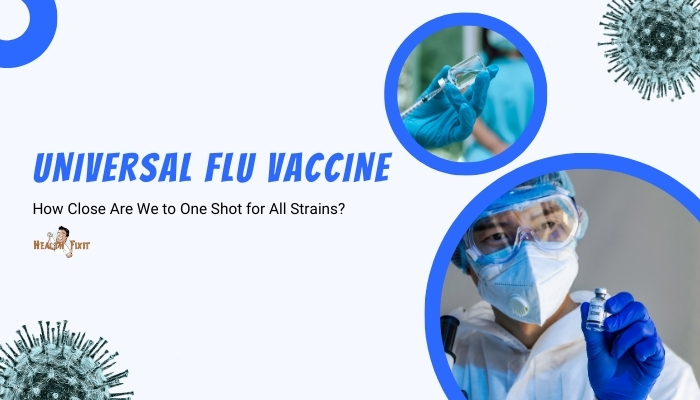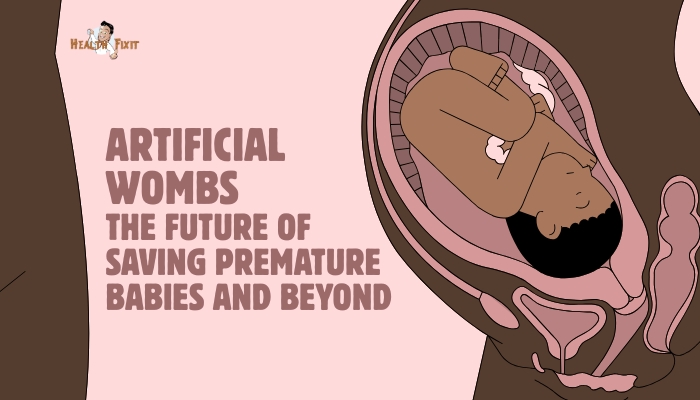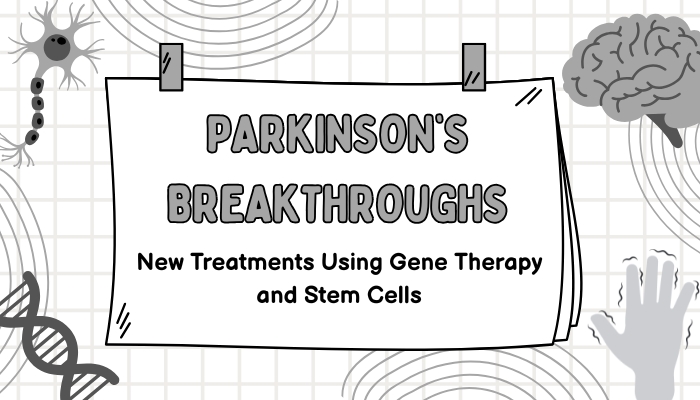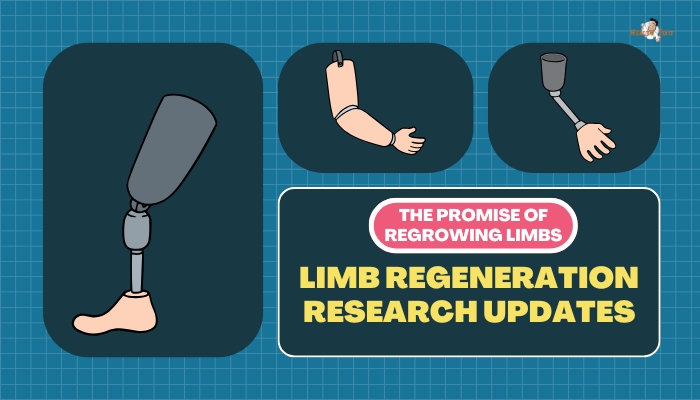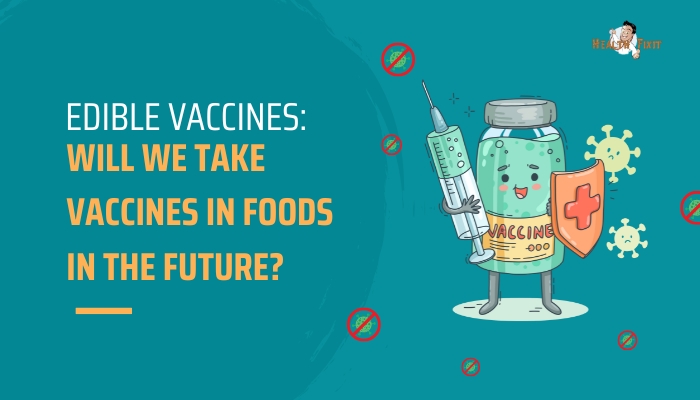Introduction
Influenza, commonly called the flu, has been a public health challenge for decades. Existing flu shots, updated annually to match circulating viral strains, offer protection but are not always effective.
Influenza viruses mutate at rapid rates, resulting in an ever-shifting set of variants. Researchers have long sought a more reliable approach: a single vaccine that can protect against many types of flu virus.
This concept, often referred to as a “universal flu vaccine,” involves broader coverage and potentially longer-lasting immunity.
Seasonal flu circulates worldwide, causing respiratory problems and contributing to many hospital stays each year. Pandemics, such as the 1918 H1N1 outbreak, have underscored the need for vaccines that can handle large viral shifts. Although current vaccines help reduce illness, they sometimes have limited efficacy when the circulating strain differs from predicted variants.
A universal vaccine could address this by focusing on stable viral components that rarely change. Such a vaccine may reduce the need for annual updates, alleviate manufacturing burdens, and improve global preparedness.
This article explores the path toward a universal flu vaccine. It explains how current vaccines function, highlights major scientific strategies, describes the immunological basis of broad protection, and discusses recent clinical trials.
It will also review the timeline for this research and the obstacles yet to be overcome. A universal vaccine does not merely promise convenience.
It could transform how the world deals with a virus that causes millions of severe infections each year. Progress is ongoing, but questions remain about how close scientists are to developing a product that truly works for everyone, year after year.
The Basics of Influenza and Current Vaccines
Influenza viruses belong to the Orthomyxoviridae family. The main types that infect humans are influenza A and B. Influenza A viruses are known for high mutation rates. They shift genes or “drift” gradually over time, causing new variants to surface. Health authorities track these changes to select which strains to include in seasonal vaccines. If the predicted strains do not match those that eventually spread, vaccine effectiveness drops.
Structure of the Influenza Virus
The surface of an influenza virus particle has two main proteins:
- Hemagglutinin (HA): A protein that helps the virus bind to host cells.
- Neuraminidase (NA): A protein that assists in releasing new viral particles.
Researchers often categorize influenza A viruses based on subtypes of these two proteins, such as H1N1 and H3N2. Both hemagglutinin and neuraminidase mutate frequently. This creates constant variation, making it hard for the immune system to recognize new strains if it has only seen older versions.
Current Vaccine Strategies
- Trivalent or Quadrivalent Inactivated Vaccines: These vaccines contain inactivated forms of selected influenza strains. Quadrivalent versions include two influenza A strains and two influenza B strains, aiming to broaden coverage.
- Live Attenuated Vaccines: These nasal spray vaccines use weakened viruses that can replicate in the cooler airways of the nose but not in warmer lung tissues.
- Recombinant Vaccines: These are made using genetic engineering to produce viral surface proteins without handling the entire virus.
Every year, experts from organizations like the World Health Organization (WHO) assess data on circulating strains to forecast which should be in the seasonal vaccine. Manufacturers begin production months in advance, and healthcare systems roll out vaccination campaigns in early fall (in the Northern Hemisphere) or pre-winter months.
Although these vaccines offer partial protection, their design matches a narrow range of strains. When the virus mutates outside expectations, effectiveness decreases. Even a well-matched vaccine typically provides around 40%–60% protection in the general population. Vulnerable groups, like older adults and individuals with weak immune systems, may see lower protection.
Why a Universal Flu Vaccine?
Flu has an impact on public health each year, leading to economic burdens and significant illness. A universal vaccine stands out for three reasons:
- Broader Coverage: This approach focuses on components of the virus that do not vary as much. By targeting more stable regions, the vaccine may protect against many subtypes.
- Fewer Updates: Annual vaccination campaigns could be reduced or simplified if a single product covers multiple emerging variants.
- Pandemic Preparedness: An effective universal vaccine might help slow the spread of a novel pandemic strain, reducing severe disease worldwide.
A universal vaccine hinges on making the immune system see the influenza virus in a way that does not rely solely on the fast-mutating hemagglutinin head region. Researchers often design strategies that spotlight “conserved” regions of viral proteins. Such regions remain relatively similar across different strains. By training the immune system to recognize those stable components, the hope is to deliver cross-protection.
Immunological Foundations of Broad Protection
Creating a universal vaccine involves harnessing how the immune system responds to infection. Successful immunization against the flu typically relies on two arms of the immune system:
- Humoral Immunity: Driven by B cells producing antibodies that neutralize the virus.
- Cell-Mediated Immunity: Directed by T cells that detect and eliminate infected cells.
Antibodies and the Role of HA
Current flu shots usually raise antibodies against the head portion of the hemagglutinin (HA) protein. However, this region changes rapidly. When the head region mutates, older antibodies become less effective. Researchers discovered that the HA stem (or stalk) region is more stable. By directing antibodies against that stalk region, scientists aim for a response that remains effective across various influenza strains.
T-Cell Responses
T cells, especially cytotoxic T lymphocytes (CTLs), can identify virus-infected cells by detecting viral proteins on their surface. These proteins often come from parts of the virus that are less variable. Strong T-cell immunity can limit disease severity and infection spread, even if antibodies are not perfectly matched. A universal vaccine might focus on epitopes—small viral protein segments—recognized by T cells across different influenza subtypes.
Memory Responses
Immunological memory is crucial for ongoing protection. Memory B cells and T cells can respond quickly if the virus reappears. A universal vaccine aims to establish robust memory cells that last for years. Researchers hope this memory will shield individuals from many influenza strains without requiring frequent re-vaccination, or at least reduce severity if infection does occur.
Strategies Toward a Universal Vaccine
Developing a universal flu vaccine is a complex challenge. Multiple strategies have emerged, each with unique advantages and hurdles.
Targeting the HA Stem
The most recognized approach involves stabilizing and presenting the HA stem region. To achieve this, scientists use protein engineering to design immunogens that showcase stem epitopes without the head region overshadowing them. Early laboratory and animal studies found that antibodies to the HA stem can neutralize diverse strains of influenza A. However, challenges persist in ensuring that humans produce adequate levels of stem-specific antibodies, especially since the immune system tends to focus on the immunodominant head region.
Mosaic Vaccines
Another method is the use of “mosaic” vaccines. These combine multiple sections of influenza proteins from many strains into a single immunogen. The goal is to prompt B cells and T cells to recognize shared structural elements found in most strains. Researchers use computational tools to select protein fragments that represent the global diversity of influenza viruses. This approach aims to cover a broad array of future variants.
Universal Peptide Vaccines
Peptide-based vaccines contain short amino acid sequences that match highly conserved regions of influenza proteins. Scientists can create synthetic peptides that reflect key T-cell or B-cell epitopes. While peptide vaccines can be simpler to produce, they may need adjuvants (substances enhancing immune response) to ensure robust immunogenicity. Also, the immune response can vary among different populations due to genetic differences in how antigens are presented to immune cells.
Nucleic Acid Vaccines
Technologies such as mRNA vaccines have shown promise. Instead of injecting a protein, these vaccines use genetic instructions that cells read to produce viral proteins internally. This method can present multiple conserved regions in a more natural form, triggering both antibody and T-cell responses. The success of recent mRNA vaccines for other pathogens has drawn attention to its potential for universal flu vaccine development. However, stability, dosing, and cost are essential factors in large-scale usage.
Viral Vector Platforms
Some research groups use viral vectors—modified viruses that carry influenza antigens. One example is adenovirus vectors, which deliver stable proteins to host cells. The immune system reacts to the new proteins, learning to recognize them as invaders. This can generate robust T-cell responses if the vector replicates efficiently enough to mimic an infection. Balancing safety, efficacy, and the body’s preexisting immunity to the vector virus remains a concern in this pathway.
Recent Progress in Clinical Trials
Dozens of research institutions and companies have launched trials to test components of universal vaccines in humans. Many remain in early phases, focusing on safety, immunogenicity, and whether volunteers produce broad-spectrum antibodies.
- Stem-Focused HA Vaccines: Several groups have investigated vaccines that expose individuals to stabilized HA stems. Early studies show that participants can generate stem-specific antibodies, albeit sometimes at modest levels.
- Mosaic Nanoparticles: Researchers have developed nanoparticles that display multiple HA or NA variants. Preliminary results suggest these nanoparticles might generate cross-protective responses in animals.
- Hybrid Platforms: Some trials combine classical inactivated viruses with new antigen designs or add a universal component as a booster. These approaches aim to enhance breadth of protection without discarding proven methods.
Clinical research must also confirm whether broad antibody or T-cell responses in the lab translate to real-world defense. Investigators measure whether participants remain healthy during flu seasons or show reduced rates of severe illness.
Challenges and Considerations
A universal flu vaccine remains an ambitious target, and many challenges persist.
Viral Variability and Evolution
Influenza A subtypes can change significantly through two main processes:
- Antigenic Drift: Small mutations accumulate in HA or NA genes.
- Antigenic Shift: More radical swaps of genetic segments can introduce a new subtype to which humans have little or no immunity.
A universal vaccine must handle both processes. Even if a vaccine matches current viral proteins, future shifts could introduce unexpected structures. Researchers must account for worst-case scenarios, like the emergence of a completely novel subtype in humans.
Immunodominance
When an individual’s immune system encounters multiple antigens simultaneously, certain parts may trigger stronger responses than others. Current influenza vaccines typically provoke a robust reaction against the HA head region. Shifting that attention to more conserved sites can be difficult. Adjuvants, structural engineering, and vaccination schedules all come into play to shape immune focus.
Manufacturing Scale
Seasonal flu vaccines are produced in vast quantities, often using egg-based systems. A universal vaccine might need alternative production platforms, such as cell culture or recombinant technology. Changes to the supply chain require regulatory approvals and large-scale testing to ensure safety and consistency.
Regulatory Pathways
Regulators approve vaccines based on safety and effectiveness data. A universal vaccine must show it prevents not only known strains but also newly emerging ones. Proving cross-protection over multiple flu seasons can be lengthy. Researchers often rely on surrogate markers like antibody titers and T-cell assays to predict long-term effectiveness.
Cost and Access
Developing a universal flu vaccine is expensive, involving many experimental vaccines in clinical trials. If researchers succeed in creating a strong vaccine, there may be added costs in shifting production facilities. However, a vaccine that offers broader protection could reduce healthcare spending over time by lowering flu-related hospital admissions. Policymakers and funding bodies must work together to support research and ensure equitable global access once a product is available.
Epidemiological Impact
Seasonal influenza infects millions worldwide. Each season sees variations in disease severity, but common complications include pneumonia, heart strain, and worsened outcomes for those with chronic illnesses. Influenza can also lead to disruptions in workplaces and schools.
Pandemic Scenarios
Beyond seasonal flu, occasional shifts in viral genes can create pandemic strains with more severe consequences. Examples include:
- 1918 H1N1 Pandemic (Spanish Flu)
- 1957 H2N2 Pandemic
- 1968 H3N2 Pandemic
- 2009 H1N1 Pandemic (Swine Flu)
A universal vaccine could be pivotal in limiting future pandemics. By targeting conserved viral structures, it might reduce mortality in the early phases when new vaccines based on the novel strain are not yet mass-produced.
Potential Reduction in Morbidity and Mortality
If a universal vaccine provides durable coverage, fewer people would require hospitalization for respiratory complications. Public health officials might also direct fewer resources toward annual reformulations, focusing instead on community outreach and vaccination programs. Ultimately, fewer outpatient visits and less absenteeism from work or school may bring economic benefits on a wide scale.
Timeline and Future Prospects
Despite optimism, a universal flu vaccine is still under development. Some researchers believe it could become a reality within the next decade, but others caution that scientific and logistical barriers remain substantial. Large-scale clinical trials require significant funding and volunteer recruitment. Demonstrating that a candidate vaccine blocks diverse influenza strains in real-world settings is a considerable undertaking.
- Short-Term Goals (1–3 years):
- Refine vaccine designs that enhance stem-specific antibodies.
- Expand early-phase trials to more participants, including older adults and those with chronic conditions.
- Compare universal approaches to standard seasonal vaccines in head-to-head studies.
- Refine vaccine designs that enhance stem-specific antibodies.
- Medium-Term Goals (4–7 years):
- Conduct large efficacy trials during active flu seasons.
- Collect real-world data on infection rates in vaccinated vs. unvaccinated populations.
- Coordinate manufacturing scale-up strategies in preparation for potential approvals.
- Conduct large efficacy trials during active flu seasons.
- Long-Term Goals (8–10+ years):
- Secure regulatory approvals for the best-performing candidates.
- Integrate universal vaccines into national immunization programs.
- Monitor for viral mutations that might circumvent broad immune defenses.
- Secure regulatory approvals for the best-performing candidates.
The scientific community has made progress in clarifying which areas of the virus are worth targeting. Novel immunogen designs offer improved breadth of protection in animal models. Innovative platforms such as mRNA further accelerate research. However, practical challenges must be addressed before a final, deployable product materializes.
Potential Benefits of a Successful Universal Vaccine
The discussion around a universal flu vaccine is more than a laboratory project. If researchers achieve their goal, the benefits could reshape the global flu landscape.
- Fewer Annual Updates: Less guesswork in predicting strains, reducing the risk of mismatch.
- Improved Efficacy: Broader coverage against both seasonal and emerging pandemic strains.
- Lower Health System Burden: Reduced hospital admissions, which frees resources for other medical needs.
- Greater Access: In time, easier distribution of a single product might simplify supply chains.
- Enhanced Pandemic Preparedness: A vaccine that already covers multiple subtypes could slow a pandemic’s initial spread.
Safety Considerations
Every vaccine must pass stringent safety tests. While influenza vaccines have a long history of safe use, each novel approach—such as new adjuvants or protein structures—requires careful study. Trials assess whether universal flu vaccines provoke harmful immune reactions or serious side effects.
- Local Reactions: Injection site soreness, redness, or swelling may occur.
- Systemic Symptoms: Fatigue, mild fever, or muscle aches sometimes follow vaccination.
- Rare Adverse Events: Researchers track any unexpected symptoms like severe allergic reactions.
Regulatory bodies analyze large data sets to ensure any universal vaccine meets established safety criteria. Independent monitoring boards oversee clinical trials to detect and address adverse events promptly.
Supporting Technologies and Methods
Scientific advancements have accelerated universal vaccine research. Key tools include:
- Structural Biology: X-ray crystallography and cryo-electron microscopy allow precise mapping of HA and NA proteins, revealing which regions are conserved.
- Computational Immunology: Machine learning and algorithmic models help identify epitopes with minimal variability across strains.
- Synthetic Biology: Researchers can insert custom DNA or mRNA sequences into cells that produce desired antigens at scale.
- Systems Immunology: Large datasets track immune responses at the molecular level, guiding improvements in vaccine formulations.
Collaborative projects, sponsored by organizations like the National Institutes of Health (NIH) and philanthropic foundations, fund multi-disciplinary teams. By uniting virologists, immunologists, data scientists, and clinicians, these efforts pool knowledge to streamline the journey from concept to clinical evaluation.
Comparing Potential Universal Platforms
Below is a simplified table comparing prominent approaches in universal flu vaccine research:
| Approach | Key Target | Advantages | Challenges |
| HA Stem-Focused | Stem region of HA protein | Exploits conserved stalk domain | Eliciting strong stem responses can be tricky |
| Mosaic Nanoparticles | Multiple HA or NA variants | Broad coverage of known strains | Production complexity and dosing optimization |
| Peptide-Based | Short conserved epitopes | Simpler manufacturing, flexible design | Often need adjuvants for robust immunogenicity |
| mRNA-Based | Genetic instructions for HA, NA, or peptides | Rapid updates, strong T-cell and B-cell activity | Cold chain requirements, new tech scale-up |
| Viral Vector (e.g., Adenovirus) | Various conserved antigens | Strong cell-mediated immunity | Preexisting immunity to vector may reduce efficacy |
No single method has emerged as the clear winner. Researchers continue to refine all platforms, often combining strategies.
Integration with Other Respiratory Vaccines
Recent global events have highlighted the role of respiratory pathogens in public health. Some experts propose combining flu immunization with vaccines for other diseases like COVID-19 or respiratory syncytial virus (RSV). A universal flu vaccine, if proven effective, might be formulated in a multi-pathogen vaccine for broader respiratory protection. This would depend on overlapping production processes, demonstration of combined safety, and well-designed clinical trials.
The Role of Public Policy and Funding
National governments and international agencies play a key role in steering vaccine research. Funding for universal flu vaccine projects often comes from:
- Government Research Grants
- Nonprofit Foundations
- Industry Collaborations
- Global Health Agencies
Policymakers must assess the trade-off between ongoing seasonal vaccination programs and the potential long-term savings of a universal approach. Public-private partnerships can help manage financial risk and foster innovation. Agencies like the WHO emphasize the global nature of influenza. Efforts to create a universal vaccine must include scientific input and clinical trial participation from multiple regions.
FAQs on Universal Flu Vaccines
Below are questions that frequently arise among healthcare workers, policymakers, and the general public:
- Will annual flu vaccines become unnecessary if a universal shot is introduced?
- Potentially, yes. A universal vaccine could reduce or eliminate the need for yearly updates. But this depends on how stable the viral targets are over time.
- Potentially, yes. A universal vaccine could reduce or eliminate the need for yearly updates. But this depends on how stable the viral targets are over time.
- How soon could a universal vaccine be approved?
- Some candidates might advance through trials within five to ten years, but real-world implementation could take longer.
- Some candidates might advance through trials within five to ten years, but real-world implementation could take longer.
- Will the vaccine cover all strains, including influenza B?
- Many efforts focus on influenza A. Yet researchers also study cross-protective strategies for both A and B strains. Full coverage is an ideal outcome, but more data are needed.
- Many efforts focus on influenza A. Yet researchers also study cross-protective strategies for both A and B strains. Full coverage is an ideal outcome, but more data are needed.
- Could a universal vaccine be combined with the current seasonal shot?
- Researchers may test hybrid vaccines that include standard components plus universal targets, aiming to bridge the gap until a purely universal solution arrives.
- Researchers may test hybrid vaccines that include standard components plus universal targets, aiming to bridge the gap until a purely universal solution arrives.
- Is this approach safe for older adults or those with chronic illnesses?
- Universal vaccine trials will include diverse populations. Ensuring good immune responses in older adults is a key priority.
- Universal vaccine trials will include diverse populations. Ensuring good immune responses in older adults is a key priority.
Conclusion
A universal flu vaccine stands as a major goal in infectious disease research. While annual flu vaccines offer some protection, the ever-changing nature of influenza forces scientists to play catch-up each season. By focusing on regions of the virus that remain stable over time, researchers aim to provide broad and lasting immunity.
Progress has accelerated through modern vaccine technologies, advanced structural biology, and renewed interest in pandemic preparedness. Various strategies target hemagglutinin stalk regions, mosaic protein assemblies, conserved peptides, and even gene-based delivery. Early clinical trials show promise, but scaling these concepts for worldwide use entails rigorous testing and substantial investment.
The potential public health impact is immense. A reliable vaccine for all influenza strains could alleviate the burden of seasonal flu, prevent many hospital stays, and reduce the threat of a devastating pandemic. Although major questions remain about feasibility, cost, and how to ensure equitable distribution, the future looks bright for transforming how humanity counters this pervasive virus. Continued research, bolstered by global collaboration, may bring us closer to a day when one shot covers the broad family of influenza strains.
References
- World Health Organization. Influenza (Seasonal). 2022.
- Centers for Disease Control and Prevention. Selecting Viruses for the Seasonal Influenza Vaccine. 2021.
- Krammer F, Palese P. Universal influenza virus vaccines that target the conserved hemagglutinin stalk and conserved internal proteins. Clin Microbiol Rev. 2019;32(3):e00007-19.
- Wu NC, Wilson IA. Structural insights into the design of universal influenza vaccines. Nat Immunol. 2018;19(5):490–7.
- He W, Mullarkey CE, Miller MS. Measuring protection against influenza A virus in the context of pre-existing immunity. Nat Immunol. 2020;21(2):167–75.
- Yewdell JW, Santos JJS, Waltari E. Minimizing the risk of influenza escape through combination therapy. Microorganisms. 2021;9(10):2064.
- Pica N, Palese P. Toward a universal influenza virus vaccine: prospects and challenges. Annu Rev Med. 2013;64:189–202.
- Erbelding EJ, Post DJ, Stemmy EJ, et al. A universal influenza vaccine: The strategic plan for the National Institute of Allergy and Infectious Diseases. J Infect Dis. 2018;218(3):347–54.
- Impagliazzo A, Milder F, Kuipers H, et al. A stable trimeric influenza hemagglutinin stem as a broadly protective immunogen. Science. 2015;349(6254):1301–6.
- Nachbagauer R, Krammer F. Universal influenza virus vaccines and therapeutic antibodies. Clin Microbiol Infect. 2017;23(4):222–8.
- Nachbagauer R, Miller MS, Hai R, et al. Hemagglutinin stalk immunity reduces influenza virus replication and transmission. MBio. 2019;10(5):e00550-19.
- Cromer D, Tscharke DC, Valkenburg SA, et al. Estimating the burden of influenza-induced respiratory and circulatory mortality. J Infect Dis. 2021;223(3):530–9.
- Abdelwhab EM, Veits J, Mettenleiter TC. Preemptive strategies against influenza viruses of animal origin. Zoonoses Public Health. 2014;61(1):77–85.
- de Vries RD, Altenburg AF, Rimmelzwaan GF. Universal influenza vaccines, science fiction or soon reality? Expert Rev Vaccines. 2019;18(10):1039–47.

